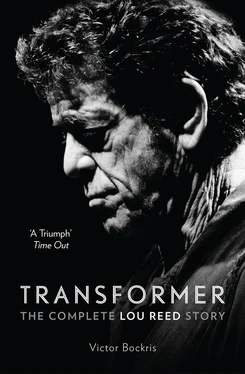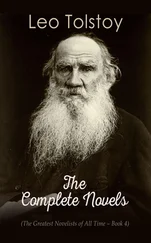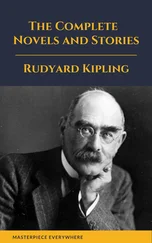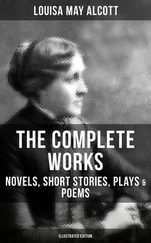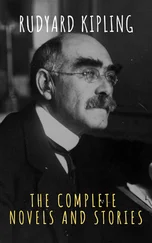Originally, the psychiatrists had invited Warhol to give an after-dinner speech at their convention. When the artist who had enraged the underground film community by screening epics like Sleep and Blowjob asked if he could show some films instead, they indulged him. Now, as one hundred of the leading psychiatrists in America settled behind coffee and snifters of brandy ready to analyze the contents of the blank screen at the far end of the dining area, their tranquillity was shattered by Barbara Rubin, who came screaming into the room brandishing a movie camera with a powerful sun-gun lamp atop it. The seemingly crazed woman rushed from table to table shoving the camera into their faces and baraging them with questions like, “Do you eat her out?” and “Is your penis big enough?” No sooner had they been blown out of their after-dinner stupor by this horrible spectacle than an unbelievably loud cacophony erupted at the far end of the room, and they swiveled in their seats to see a brand of mangy-looking young men in dirty denim jeans and jackets performing a howling song about heroin. Behind them was a starkly lit, high-contrast black-and-white film of a man tied to a chair being tortured, in front of which a real man was brandishing a whip. Embarrassed, insulted, and perplexed, the psychiatrists reacted by grabbing their partners and storming the exits, or sitting forward with benevolent smiles trying to “understand” the spectacle in front of them. As Warhol stood off to the side, staring impassively at the panicked throng with a trace of a smile, and Nico stared impassively from the stage, Lou reached the climax of his paean to nullification, intoning, “And I guess that I just don’t know, and I guess that I just don’t know.” The event was reported in the New York Times the following day under the title “Shock Treatment for Psychiatrists.”
The tension between the band and Nico was somewhat ameliorated in the following weeks when Lou fell madly in love with the tall European with long flaxen hair. According to Richard Mishkin, to whom Lou expressed his emotions about her, Lou loved the fact that Nico was big. According to Lou, “Nico’s the kind of person that you meet and you’re not quite the same afterwards. She has an amazing mind.”
Lou, John, and Sterling had all moved to 450 Grand Street at the end of 1965. Now Lou would often stay at the apartment Nico was subletting on Jane Street, where he wrote three songs for her. “One night Nico came up to me and said, ‘Oh, Lou, I’ll be your mirror,’” he recalled. “A close friend of mine always said that I bring out the idiocy in people, but I can also bring out something in them which is the best they’ve ever done. It’s like with Nico and John Cale. They were fantastic with the Velvet Underground. They helped produce a great sound then. When I gave Nico a song of mine to sing, I knew she would totally understand what was being said and perform it from that standpoint.” Nico described Lou as “very soft and lovely. Not aggressive at all. You could just cuddle him like a sweet person when I first met him, and he always stayed that way. I used to make pancakes for him. Everybody loved him around the Factory; he was rather cute, you know, and he said funny things.”
According to Cale, “We had no idea what Nico could bring to the band, it was just something Andy came up with and it was very difficult to accept. Lou kind of fell in love with the idea, but we didn’t understand it.” In fact, with Warhol’s encouragement, Nico became something of an inspiration for Lou. “Andy said I should write a song about Edie Sedgwick. I said, ‘Like what?’ and he said, ‘Oh, don’t you think she’s a femme fatale, Lou?’ So I wrote ‘Femme Fatale’ and we gave it to Nico.” But this also caused conflicts within the group. The tough-minded Moe felt Nico “was a schmuck, from the first. She was this beautiful person who had traveled through Europe being a semistar. Her ego had grown very large. The songs Lou wrote for her were great, and she did them very well. Her accent made them great, but there was a limit! I kept to myself until she wanted to sing ‘Heroin.’ But then I had to speak my piece.” “There were problems from the very beginning,” added Sterling, “because there were only so many songs that were appropriate for Nico, and she wanted to sing them all—‘l’m Waiting for the Man,’ ‘Heroin,’ all of them. We said, ‘No, no!’ She wasn’t very egotistical, she was out of it. I always explained it by saying she’s not very good at English.”
“When I started with the Velvets, I wanted to sing Lou’s song ‘I’m Waiting for the Man,’” said Nico, “but he wouldn’t let me. I guess he thought I didn’t understand its meaning, and he was right. And we had the song ‘Heroin,’ which I thought was a provocation. But I have to say that Lou and John took heroin, and those songs were songs of realism.” Cale looked on at what transpired with Welsh amusement. “Lou and Nico had some kind of an affair, both consummated and constipated,” he said. “At the time he wrote these psychological love songs for her like ‘I’ll Be Your Mirror’ and ‘Femme Fatale,’ which gave the band a new dimension. It was a difficult situation, I must admit, and sometimes I don’t know how we accepted it. Still, Andy brought her into the band, and we nearly always accepted Andy’s decisions. He was so much on our side, so enthusiastic about everything we did, that we couldn’t help it.”
“My favorite Lou Reed song is … aah … ‘All Tomorrow’s Parties,’” Warhol told an interviewer many years later in a mild put-down. “By Nico. She wrote it, I think.”
Lou himself recalled most vividly two memories of Nico and Andy that had an eerie similarity: “I sat in an ice cream shop late one night watching Andy take the hand of a less than ordinary person sitting opposite him and slap his [Andy’s] own face with it. It somehow reminded me of Delmore raging in a bar, asking me to call the White House to tell them we were aware of the plot.
“I loved after-hours bars. It’s where I first saw someone beaten to death. The woman I was with, Nico, threw a glass that shattered in a mob guy’s face. He thought the man behind me did it.”
January to April 1966 was the golden period for the Velvet Underground and Andy Warhol. After the psychiatrists’ convention, Warhol shot a scintillating film of the band rehearsing at the Factory, Symphony of Sound , which remains the single best visual record of the Velvet Underground. They also recorded soundtracks for two of Warhol’s best movies shot at the beginning of the year, Hedy and More Milk Yvette .
In February 1966, Andy appeared on WNET TV in New York, coyly announcing in his usual deadpan voice, “I’m sponsoring a new band. It’s called the Velvet Underground. Since I don’t really believe in painting anymore, I thought it would be a nice way of combining music, art, and films all together. The whole thing’s being auditioned tomorrow at nine o’clock. If it works out, it might be very glamorous.” That week, with the help of Barbara Rubin, he launched the Velvets at the underground film center Cinémathèque, as part of a multimedia show called Andy Warhol Uptight , a paean to conflict, which developed out of the psychiatrists’ convention. Gerard Malanga came into his own as the whip dancer, improvising a series of story dances that illustrated Lou’s songs. Behind the band was a backdrop of Warhol films, most of which starred Edie Sedgwick, like Beauty #2 . Nico sang three songs and rattled a tambourine. “They also played the record of Bob Dylan’s song ‘I’ll Keep It with Mine,’” she said, “because I didn’t have enough to sing otherwise. I had to stand there and sing along with it. I had to do this every night for a week. It was the most stupid concert I have ever done.”
Читать дальше
